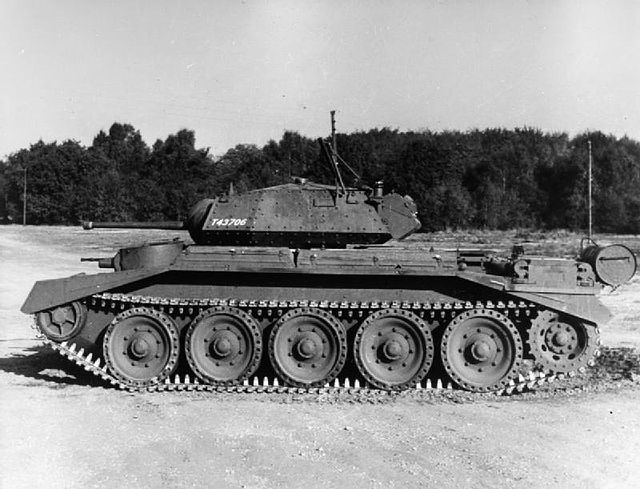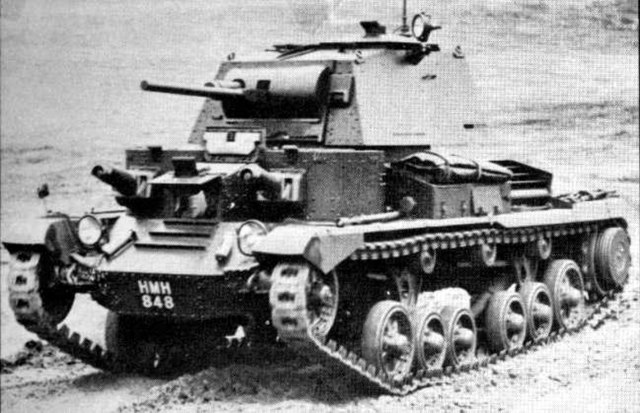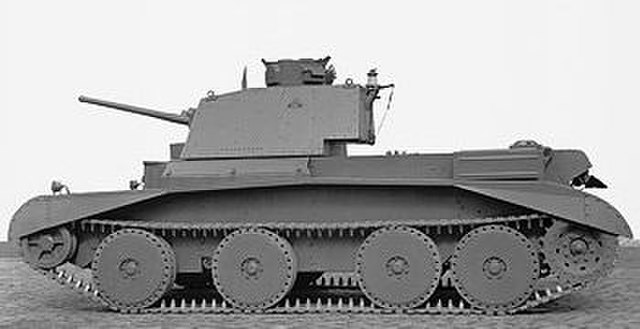Crusader, in full "Tank, Cruiser Mk VI, Crusader", also known by its General Staff number A.15, was one of the primary British cruiser tanks during the early part of the Second World War. Over 5,000 tanks were manufactured and they made important contributions to the British victories during the North African campaign. The Crusader tank would not see active service beyond Africa but the chassis of the tank was modified to create anti-aircraft, fire support, observation, communication, bulldozer and recovery vehicle variants.
A Crusader III on display at The Tank Museum
Crusader I tanks in Western Desert, 26 November 1941, with "old" gun mantlets and auxiliary Besa MG turret.
Crusader Mk III tanks in Tunisia, 31 December 1942.
Crusader III in Operation Bertram, the deception before Alamein, with 'Sunshade' camouflage
The cruiser tank was a British tank concept of the interwar period for tanks designed as modernised armoured and mechanised cavalry, as distinguished from infantry tanks. Cruiser tanks were developed after medium tank designs of the 1930s failed to satisfy the Royal Armoured Corps. The cruiser tank concept was conceived by Giffard Le Quesne Martel, who preferred many small light tanks to swarm an opponent, instead of a few expensive and unsatisfactory medium tanks. "Light" cruiser tanks carried less armour and were correspondingly faster, whilst "heavy" cruiser tanks had more armour and were slightly slower.
Crusader Mark I with auxiliary turret
A damaged Cruiser Mk I Close Support abandoned in Calais, 1940.
Cruiser Tank Mark I (A9)
The Cruiser Mark III (A13) with large wheels typical of the Christie suspension








